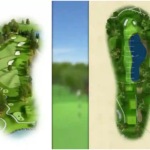The field of spine surgery continues to improve with rapid technological advancements that aim to improve precision, safety and patient outcomes. Among the most promising innovations is the integration of Augmented Reality (AR) with robotic-assisted systems. This combination is reshaping surgical workflows by offering enhanced visualization and real-time guidance during complex procedures. Dr. Larry Davidson, a leader in spinal surgery, recognizes the potential of AR-robotic integration to upgrade how spine surgeons approach planning, navigation and execution in the operating room.
By merging AR’s immersive capabilities with robotics’ mechanical accuracy, spine surgeons are better equipped to perform intricate procedures with greater control and confidence. This fusion of technologies marks a significant step forward in the pursuit of minimally invasive, patient-specific surgical care.
What Augmented Reality Brings to Spine Surgery
Augmented reality overlays digital information, such as anatomical models, surgical pathways and instrument positions, onto the surgeon’s field of view. Unlike virtual reality, which creates a fully immersive environment, AR enhances the real-world setting by adding context-specific data that supports intraoperative decision-making.
In spine surgery, AR is commonly used with head-mounted displays or screen-based systems that provide real-time visualization of the patient’s anatomy. Surgeons can view critical structures such as nerves, vertebrae and implant trajectories without diverting attention from the surgical site. This continuous awareness enhances accuracy and minimizes the likelihood of damaging nearby tissues.
The Role of Robotics in AR-Enhanced Procedures
Robotic systems in spine surgery offer mechanical precision that supports controlled instrument guidance, consistent implant placement and stability during complex maneuvers. When combined with AR, these systems become even more effective. The AR interface provides visual feedback that complements the robotic system’s execution, creating a closed-loop surgical environment.
Dr. Larry Davidson explains, “Emerging minimally spinal surgical techniques have certainly changed the way that we are able to perform various types of spinal fusions. All of these innovations are aimed at allowing for an improved patient outcome and overall experience.” These advancements, particularly when paired with AR-enhanced robotic systems, are reshaping the surgical landscape by providing real-time visual and tactile feedback that improves both accuracy and confidence during intricate procedures.
By integrating AR with robotic platforms, spine surgeons can visualize the planned pathway while the robot assists in maintaining the trajectory. This co-navigation reduces uncertainty and enhances the overall precision of procedures like pedicle screw placement, decompression and fusion.
Benefits of AR-Robotic Integration for Surgeons and Patients
The combination of augmented reality and robotics offers a range of benefits:
- Improved Accuracy: AR visualizations guide the robotic system more precisely, reducing the margin of error.
- Minimized Invasiveness: Smaller incisions and targeted access preserve muscle and tissue, leading to faster recovery.
- Enhanced Safety: Real-time visualization of critical anatomy lowers the risk of nerve or vessel injury.
- Better Ergonomics: AR headsets reduce the need to shift focus to monitors, allowing the surgeon to remain engaged with the operative field.
- Streamlined Workflow: AR interfaces help guide robotic actions more intuitively, reducing the cognitive load on surgeons.
These advantages collectively contribute to fewer complications, lower rates of revision surgery and higher patient satisfaction.
Use Cases and Applications in Spine Surgery
AR-robotic integration is especially beneficial in procedures requiring high precision, such as:
- Scoliosis Correction: Accurately placing implants along curved spinal segments.
- Minimally Invasive Lumbar Fusion: Navigating through narrow anatomical corridors.
- Revision Surgeries: Identifying previous hardware and navigating scar tissue.
- Spinal Tumor Resection: Preserving vital structures while removing diseased tissue.
These applications demonstrate the integrated system’s flexibility and power in adapting to a wide range of clinical challenges.
Technological Challenges and Considerations
Despite its promise, AR-robotic integration is not without challenges. Ensuring the accuracy of virtual overlays in dynamic surgical environments requires sophisticated tracking systems and calibration processes. Any lag or misalignment between the AR display and the robotic system can impact surgical performance.
Learning curves are also associated with using both technologies simultaneously. Surgeons must be trained to interpret AR overlays while maintaining situational awareness and managing robotic controls. The cost of implementation, including AR hardware, software integration and robotic platforms, can be a barrier for some healthcare institutions.
Addressing these challenges will require continued refinement of interface design, workflow standardization and broad access to training programs. Streamlining the user interface will help reduce cognitive load during procedures, allowing surgeons to focus more on patient outcomes rather than managing complex systems. Standardizing workflows across different platforms can also minimize variability, ensuring consistent results regardless of the surgical setting.
Expanding access to comprehensive training programs will be critical in helping both new and experienced surgeons adapt confidently to emerging technologies. Collaboration between technology developers, healthcare institutions and regulatory bodies will play a key role in setting clear guidelines and best practices to support the safe, effective adoption of these advanced tools.
Future Directions and Innovations
The future of AR and robotics in spine surgery is filled with potential. As systems become more intuitive, we can expect improvements in the user interface, integration with artificial intelligence and real-time data adaptation. These features will further enhance personalization and intraoperative decision-making.
Wearable AR displays will become lighter and more interactive, while robotic systems will offer increased dexterity and adaptability. Eventually, these technologies may support autonomous or semi-autonomous actions under surgeon supervision, optimizing precision even further.
Cloud-based data sharing and surgical simulation platforms may also expand access to AR-robotic tools, enable collaboration across institutions and elevate surgical standards worldwide. These technologies can facilitate real-time feedback, remote mentoring and continuous learning, help bridge skill gaps and support consistent surgical excellence across diverse healthcare settings.
A Developing Partnership for Spine Surgery
The integration of augmented reality with robotic systems is improving spinal surgery by providing a powerful combination of visualization and precision. This partnership enables spine surgeons to perform with heightened awareness, increased control and greater confidence.
As these technologies continue to mature, their role in spine care will only expand, ushering in a new era of safer, smarter and more efficient procedures. With AR and robotics working together in the operating room, the future of spinal surgery is not only more advanced but also more patient-centered than ever before.













